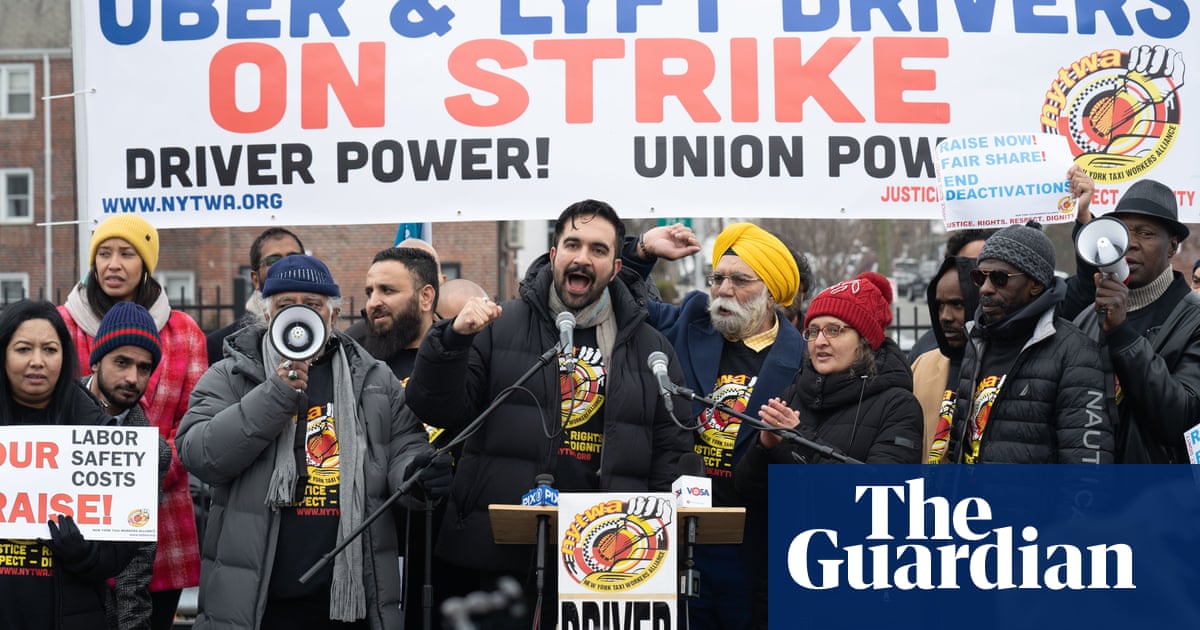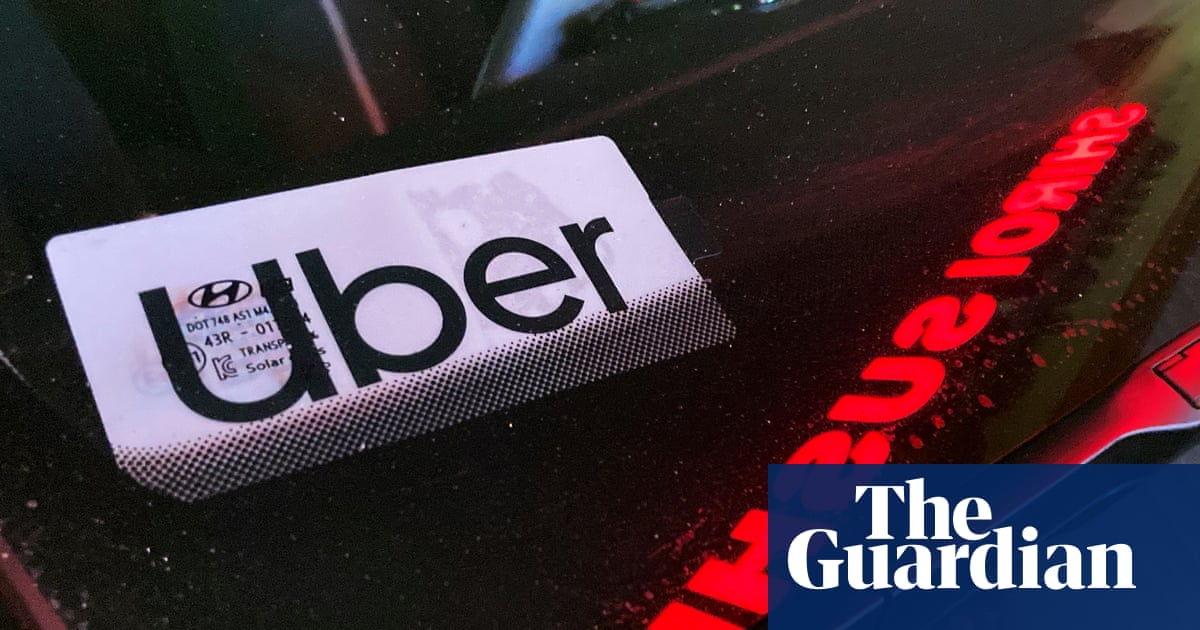
For more than five years James Jordan worked full time for Uber in Los Angeles, California, until early 2022, when he was permanently deactivated from the app – Uber’s equivalent of being fired.
He said he later found out he was deactivated due to old customer complaints, but that Uber would not listen to his appeals or offer to provide dash-cam footage to disprove the allegations.
“Within a week, 10 days, I had gotten a number of complaints. I didn’t know where they were coming from,” said Jordan, who said he completed over 27,000 rides for Uber and had a 4.95 rating on the app before his permanent deactivation.
Jordan’s is not an isolated case. A report published by the Asian Law Caucus and Rideshare Drivers United, based on survey responses from 810 rideshare drivers for Uber and Lyft in California, found two-thirds of drivers have experienced temporary or permanent deactivations of their accounts, with drivers of color and immigrant drivers disproportionately affected. Jordan is Black.
The survey responses detailed unfair and non-transparent deactivations, with 30% of drivers claiming they received no explanation for deactivations. The survey detailed incidents of discrimination from customers and customers making frivolous complaints in order to gain free rides or credits from the rideshare companies. Drivers said there was no fair process in place for drivers to respond or advocate on their own behalf.
Jordan said his troubles started when he turned down trips that were miles away from his location and wouldn’t be economically worth taking. He also had issues with some riders who refused to adhere to Uber’s mask mandate policy that was still in effect at the time even though local and state mask mandates had been lifted.
“In less than two weeks, five and half years was down the drain. I requested an appeal, but Uber was not interested in an appeal or my dash-cam footage,” said Jordan. “It was traumatic. The anxiety levels, stress levels and emotions were off the chart. I worked full time, giving my all, and invested so much time and energy in five and a half years.”
Jordan said he filed a claim in small claims court against Uber for his permanent deactivation, but his case was dismissed because all Uber drivers have to sign terms and conditions before working for the company that stipulate Uber can deactivate drivers at any time.
“Uber needs to be regulated,” added Jordan. “Uber is redefining independent contracting to fit their agenda. We need the attorney general’s office to take seriously these violations that I and hundreds of other drivers are experiencing.”
Uber and Lyft drivers around the US are pushing for improvements to wages, working conditions and regulations of the rideshare industry.
In 2020 California passed a ballot initiative – Proposition 22 – that allowed app-based businesses to classify their workers as independent contractors. An analysis conducted by the National Equity Atlas on the impact of the bill on rideshare driver earnings found drivers’ median net earnings are now $6.20 per hour, less than the $7.25 federal minimum wage. The analysis found that drivers would receive nearly $11 an hour more if they were classified as employees rather than independent contractors.
Prop 22 promised limited benefits to gig app workers without classifying them as employees and went into effect in January 2021 after passing as a statewide ballot initiative. Gig companies spent $224m in support of the initiative.
The Federal Trade Commission recently issued a policy brief criticizing the lack of transparency in the algorithms used by rideshare apps.
In Massachusetts, Uber and Lyft drivers rallied outside Uber headquarters in Saugus, Massachusetts, on 1 March in support of union rights through the state’s rideshare drivers justice bill (HD2071 and SD1162), which would also enable reform of deactivation rights. Uber and Lyft had spent millions of dollars pushing to bring similar legislation as Prop 22 to Massachusetts, but the ballot initiative was blocked in court in 2022.
Joelfi Arias, 28, has worked as a driver for Uber and Lyft for more than four years. He began driving for the rideshare services after he had to leave college to help his family out when his father was deactivated from Uber without explanation and his mother was diagnosed with cancer.
He said he was enticed to work for the app-based companies by their emphasis on flexibility and the allure of working for himself, but these promises quickly revealed themselves to be mere hype.
“Unfortunately, throughout the years, I’ve been noticing its big propaganda trying to get people hooked to the apps. Basically, you see throughout the years how you’re treated unfairly,” said Arias. “The only way we’re going to defend ourselves is to unionize.”
Uber and Lyft deferred comment on the rally to the industry-backed group Massachusetts Coalition for Independent Work, whose spokesperson Conor Yunits said in a statement: “Rideshare and delivery drivers spent last year making their voices heard loud and clear: they want to remain independent.”
But drivers across the country are still taking action. On 26 February, Uber and Lyft drivers in New York City went on strike at LaGuardia airport to protest against unfair deactivations and the rideshare companies’ blocking of raises for drivers in the city, the third strike held by drivers over these issues.
“Since I started driving for Uber in 2014, the company has taken a bigger and bigger cut of each fare. Sometimes they take 50% of the fare the passenger pays,” said Samassa Tidiane, an Uber driver in New York City. “Everything comes out of drivers’ pockets. Uber doesn’t pay for our cars, our gas, our insurance, our vehicle maintenance. They even charge us to take our pay out of our Uber accounts – all this while the prices for everything are going up and drivers are struggling to feed our families.”
A February 2023 report published by the UCLA Labor Center found Uber and Lyft increased median passenger fares by 50% from February 2019 to April 2022 while median driver pay increased by only 31% during the same time frame. The report is based on an analysis of 50m Uber and Lyft trips in New York City.
And in Chicago rideshare drivers are pushing for a city ordinance to raise pay, improve safety and transparency, and develop appeals processes for deactivations through local government.
A spokesperson for Lyft disputed the reports and analyses on rideshare drivers.
“We strongly condemn discrimination of any kind and are committed to preventing it on our platform. This report is flawed to its core with a predetermined conclusion not grounded in facts. Lyft takes safety reports from riders and drivers seriously and reviews and investigates them to determine the appropriate course of action. This report does not reflect the actual experiences of the majority of drivers,” the company said in an email. “With record low unemployment, and more than 1 million unfilled traditional job openings in California, drivers wouldn’t continue to choose this work if there was any truth to these findings. Drivers continue to drive with Lyft because of the earning potential, independence, and flexibility it provides.”
Uber did not provide a comment.












